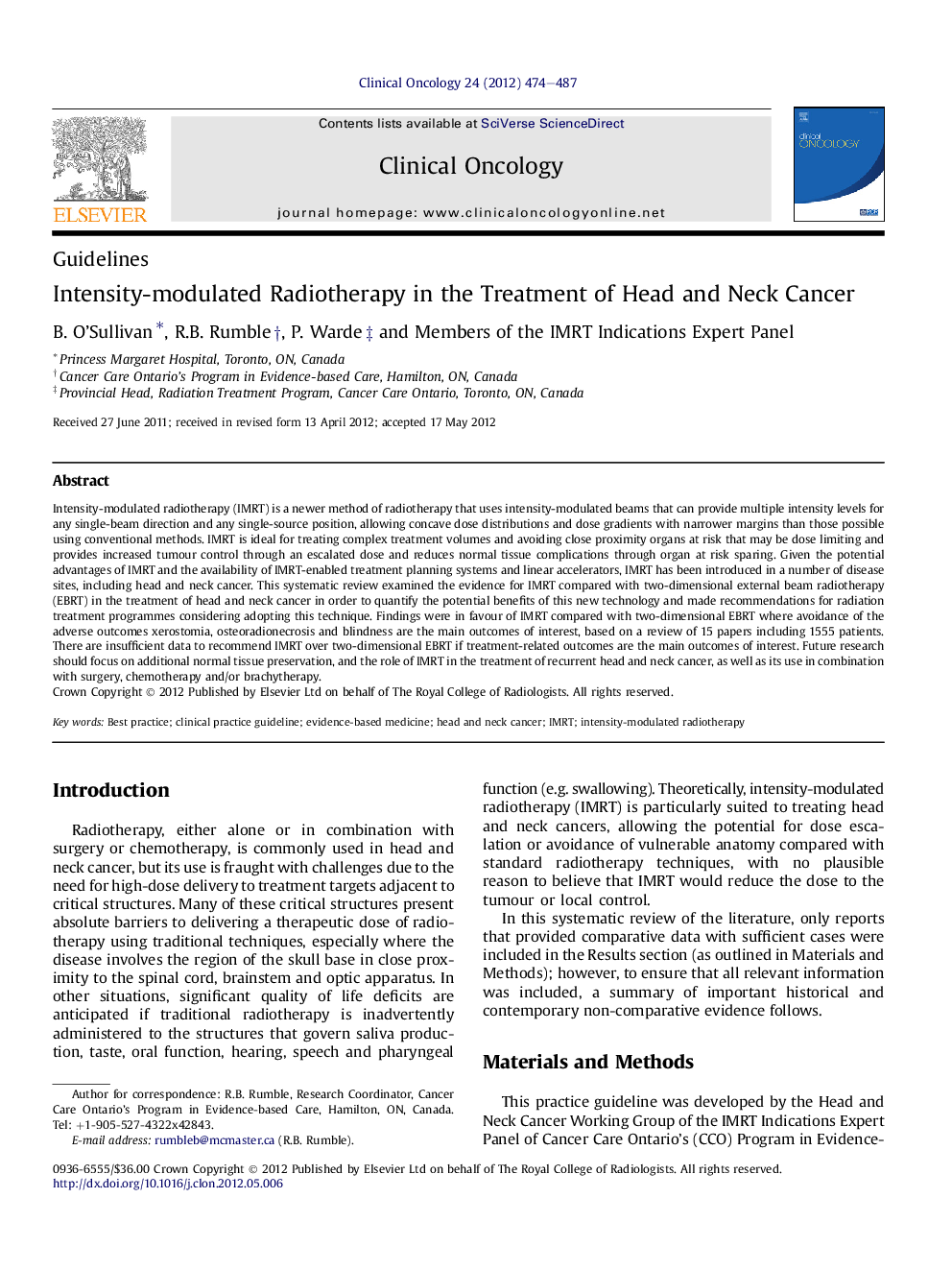| Article ID | Journal | Published Year | Pages | File Type |
|---|---|---|---|---|
| 5698570 | Clinical Oncology | 2012 | 14 Pages |
Abstract
Intensity-modulated radiotherapy (IMRT) is a newer method of radiotherapy that uses intensity-modulated beams that can provide multiple intensity levels for any single-beam direction and any single-source position, allowing concave dose distributions and dose gradients with narrower margins than those possible using conventional methods. IMRT is ideal for treating complex treatment volumes and avoiding close proximity organs at risk that may be dose limiting and provides increased tumour control through an escalated dose and reduces normal tissue complications through organ at risk sparing. Given the potential advantages of IMRT and the availability of IMRT-enabled treatment planning systems and linear accelerators, IMRT has been introduced in a number of disease sites, including head and neck cancer. This systematic review examined the evidence for IMRT compared with two-dimensional external beam radiotherapy (EBRT) in the treatment of head and neck cancer in order to quantify the potential benefits of this new technology and made recommendations for radiation treatment programmes considering adopting this technique. Findings were in favour of IMRT compared with two-dimensional EBRT where avoidance of the adverse outcomes xerostomia, osteoradionecrosis and blindness are the main outcomes of interest, based on a review of 15 papers including 1555 patients. There are insufficient data to recommend IMRT over two-dimensional EBRT if treatment-related outcomes are the main outcomes of interest. Future research should focus on additional normal tissue preservation, and the role of IMRT in the treatment of recurrent head and neck cancer, as well as its use in combination with surgery, chemotherapy and/or brachytherapy.
Keywords
Related Topics
Health Sciences
Medicine and Dentistry
Oncology
Authors
B. O'Sullivan, R.B. Rumble, P. Warde, Members of the IMRT Indications Expert Panel Members of the IMRT Indications Expert Panel,
